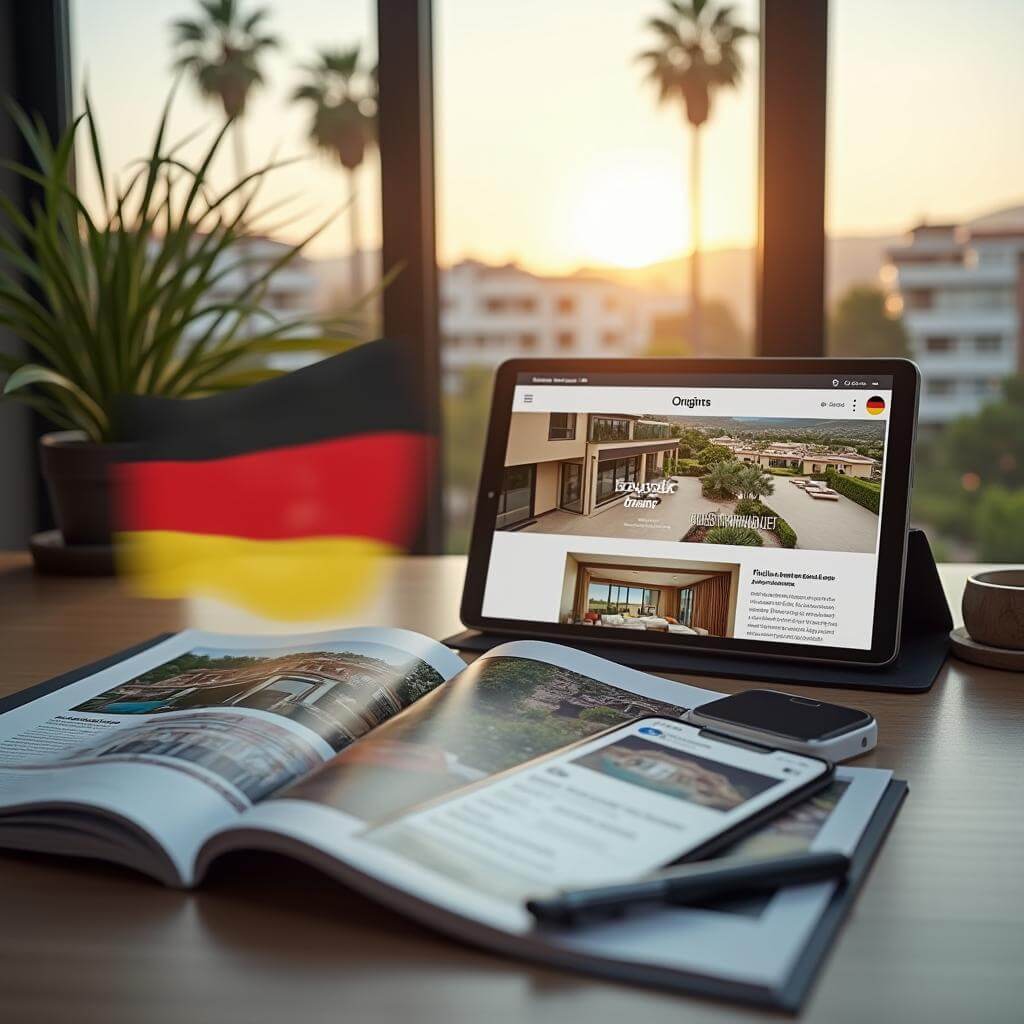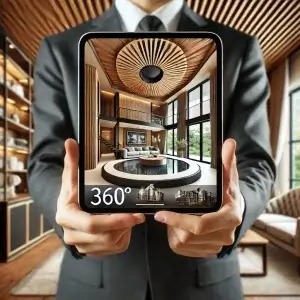5 Best Corporate Christmas Gifts for Real Estate Businesses on the Costa del Sol
5 Best Corporate Christmas Gifts for Real Estate Businesses on the Costa del Sol

The Costa del Sol’s real estate market is bustling with activity and competition, so making a lasting impression during the holiday season is essential. Thoughtful corporate gifts that combine elegance, practicality, and local appeal are an excellent way for real estate agencies and developers to strengthen relationships with clients and partners. This article highlights five of the best corporate Christmas gift ideas tailored specifically for the Costa del Sol real estate market, designed to boost your brand’s visibility while delighting recipients.
1. Branded Calendars: Practical Year-Round Marketing with a Local Touch
Branded calendars continue to be an excellent promotional tool because they remain visible to recipients every day of the year. When personalized with breathtaking images of Costa del Sol properties or stunning local landscapes, these calendars do more than just keep track of dates—they evoke a strong emotional connection to your real estate brand. Clients will likely display these calendars in their homes or offices, ensuring your agency stays top of mind throughout the year while providing practical help in planning and organization.
This combination of utility and continual brand exposure makes branded calendars a highly effective marketing gift within the real estate industry on the Costa del Sol. By integrating local imagery and your company’s logo, you also reinforce your agency’s position as a community-focused and trusted expert.
2. Premium Coffee Hampers: Indulge Clients with a Taste of the Costa del Sol Lifestyle
A premium coffee hamper is a sophisticated gift that aligns perfectly with the relaxed yet luxurious lifestyle that defines the Costa del Sol. These hampers can feature gourmet international coffee blends along with delectable local Mediterranean treats such as artisanal pastries and chocolates. Not only is this a delicious way to show appreciation, but it also emotionally connects clients to the region’s unique vibe and hospitality.
 Coffee hampers are universally enjoyed gifts that suit a diverse client base, including international buyers, and position your real estate business as both thoughtful and refined. This consumable luxury reflects the leisure and quality lifestyle that many clients are seeking when investing in Costa del Sol properties.
Coffee hampers are universally enjoyed gifts that suit a diverse client base, including international buyers, and position your real estate business as both thoughtful and refined. This consumable luxury reflects the leisure and quality lifestyle that many clients are seeking when investing in Costa del Sol properties.
3. Eco-Friendly Desk Accessories: Combining Sustainability with Elegant Functionality
With sustainability becoming an increasingly important value among buyers and developers, eco-friendly desk accessories represent a smart and stylish gift choice. Items such as bamboo desk organizers, recycled leather journals, or sustainably sourced plants offer recipients something practical and aesthetically pleasing. By choosing these gifts, your real estate agency communicates a clear commitment to environmental responsibility, appealing to eco-conscious clients who value sustainability as part of their investment choices.
This eco-friendly gifting approach helps enhance your brand image as a forward-thinking business dedicated to modern principles, while providing useful and elegant products that fit well within any professional workspace.
4. Personalized Stationery & Business Card Holders: The Power of a Personal Touch
Personalized stationery items and business card holders are gifts that feel unique and special. Custom embossed notecards, elegant branded stationery sets, or classy business card holders transform everyday professional tools into lasting symbols of appreciation and trust. These gifts are especially practical in the real estate sector, where meetings, property visits, and networking events are constant. Giving a personalized gift demonstrates your attention to detail and helps solidify client and partner loyalty.
Offering professionally crafted stationery enhances your agency’s brand perception and makes a meaningful impact on recipients by providing them with functional yet luxurious tools that keep your name at their fingertips.
5. Luxury Notebooks & Pens: Classic Gifts that Speak to Professionalism
 High-quality notebooks paired with elegant pens never go out of style as corporate gifts. These practical yet luxurious items are perfect for note-taking during property tours, client meetings, and contract signings. Presenting such gifts conveys trust, quality, and attention to professionalism—values that are especially important in the high-stakes Costa del Sol real estate market.
High-quality notebooks paired with elegant pens never go out of style as corporate gifts. These practical yet luxurious items are perfect for note-taking during property tours, client meetings, and contract signings. Presenting such gifts conveys trust, quality, and attention to professionalism—values that are especially important in the high-stakes Costa del Sol real estate market.
Luxury notebooks and pens encourage daily use, ensuring that your brand remains visible and associated with reliability and prestige. These timeless gifts help reinforce your agency’s reputation as a top-tier real estate service provider.
Q&A Section
- Why do branded calendars remain an effective marketing gift?
- Because they provide ongoing, practical year-round visibility and allow your brand to connect emotionally with clients through personalized local imagery.
- What makes premium coffee hampers a great choice for clients?
- They offer an indulgent experience that links your brand to the enjoyable Costa del Sol lifestyle, making them perfect for both local and international clients.
- How do eco-friendly gifts impact client perceptions?
- They position your agency as environmentally conscious and modern, which resonates with today’s sustainability-minded market.
- Why is personalized stationery valuable for real estate corporate gifting?
- It creates a unique and memorable gift experience that strengthens client relationships through practical, luxury tools.
- What advantages do luxury notebooks and pens offer?
- They reflect professionalism and quality, supporting your agency’s image while being useful in daily business activities.
Flick through our catalogue for ideas


 Neuroscience Reveals Print’s Secret Superpowers
Neuroscience Reveals Print’s Secret Superpowers

 Imagine placing QR codes on your property signs, brochures, and marketing materials knowing you can instantly update the destination without reprinting anything. When a property price drops, staging changes, or new drone footage becomes available, dynamic codes let you keep all marketing materials current with just a few clicks.
Imagine placing QR codes on your property signs, brochures, and marketing materials knowing you can instantly update the destination without reprinting anything. When a property price drops, staging changes, or new drone footage becomes available, dynamic codes let you keep all marketing materials current with just a few clicks. with dynamic QR codes. Instead of displaying basic contact information, these codes can instantly transport potential buyers to comprehensive property presentations including 3D virtual tours, detailed specifications, neighborhood information, and direct booking systems for viewings.
with dynamic QR codes. Instead of displaying basic contact information, these codes can instantly transport potential buyers to comprehensive property presentations including 3D virtual tours, detailed specifications, neighborhood information, and direct booking systems for viewings. As Costa del Sol’s real estate market continues attracting international attention, agencies that embrace dynamic QR code technology gain significant competitive advantages. These tools provide the flexibility, analytics, and automation necessary to effectively serve diverse global markets while maintaining the personal touch that luxury real estate clients expect.
As Costa del Sol’s real estate market continues attracting international attention, agencies that embrace dynamic QR code technology gain significant competitive advantages. These tools provide the flexibility, analytics, and automation necessary to effectively serve diverse global markets while maintaining the personal touch that luxury real estate clients expect.




